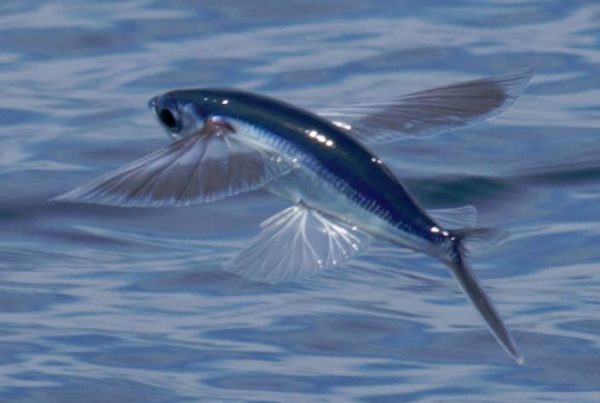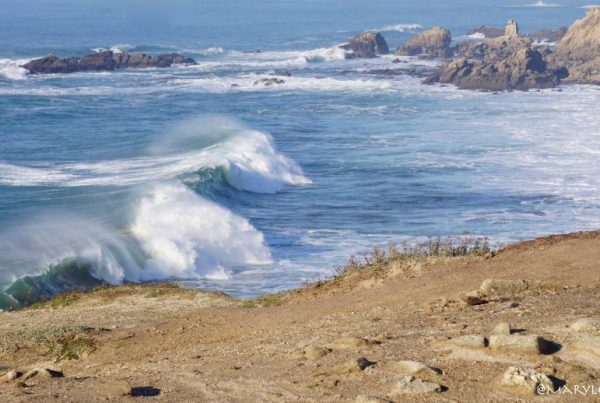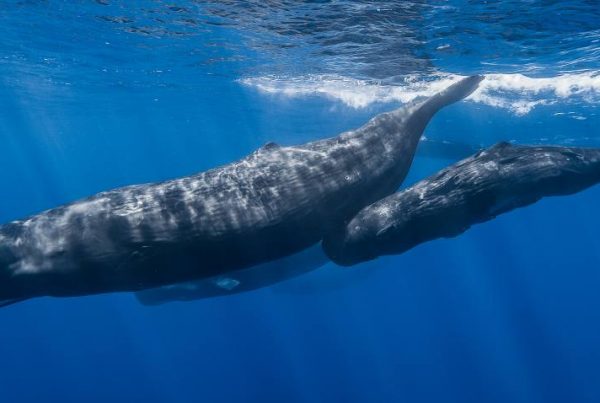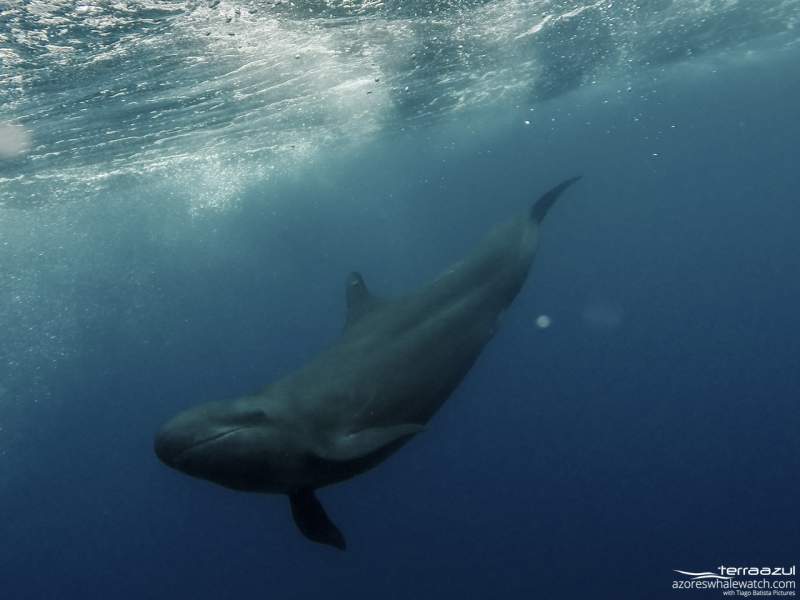
Yesterday we were lucky to encounter a pod of False Killer Whales (Pseudorca crassidens).
False Killer Whales are typically seen in groups of 5-25 individuals. They can be found worldwide in deep offshore tropical to warm temperate waters. They live primarily in the open ocean but can occasionally expand to the continental shelf and in nearshore areas around tropical oceanic islands.
Here in the Azores they are one of the rarely sighted species. They don’t show a defined pattern, they just come and go whenever they want.
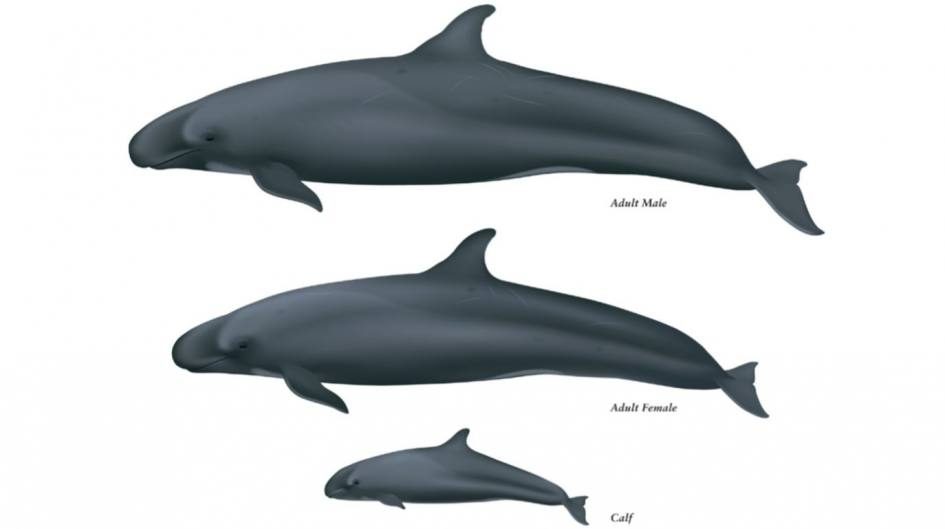

False Killer Whales (Pseudorca crassidens) have a rounded head, a relatively small falcate dorsal fin located at the midpoint of the back, and flippers with an S-shaped front edge. They can be identified as a torpedo-shaped ‘blackfish’, with a dark grey, often appearing black, streamlined body. Source: Encyclopedia of Marine Mammals IIIrd Ed. Bernd Würsig, I. G. M. Thewissen & KIT M. Kovacs Editors.
With a lenght of 5-6 m they are one of the larger members of the family Delphinidae. They are most closely related to Risso’s dolphin (Grampus griseus), melon-headed Whales (Peponocephala electra), Pygmy Killer Whales (Feresa attenuata) and Pilot Whales (Globicephala spp.) (Martien et al. 2014)
I guess you’re wondering, why are they named False Killer Whales?
They don’t look like Killer Whales (Orcinus orca) at first sight. But actually they do have similarities in skull morphology. They are also able to hunt on smaller dolphins and may attack larger whales .
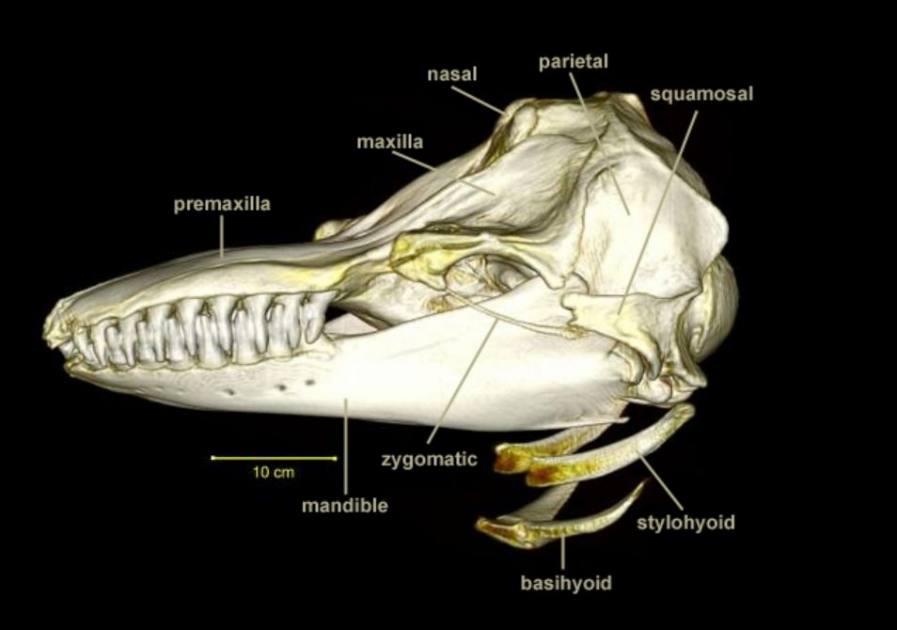

False Killer Whale (Pseudorca crassidens) skull. Source: CSI Computerized Scanning and Imaging Facility of Woods Hole Oceanographic Institution
They are high on the food web and consume a large variety of fish and cephalopods. They travel in broad band to increase their chances of finding prey, and if one individual captures a large fish others will usually converge and they will share prey.
References:
Würsig B., Thewissen J.G.M., Kovacs K. M. 2018. Encyclopedia of Marine Mammals, third edition. pp. 347-348
Still R., Harrop H., Stenton T., Dias L. 2019. Europe’s Sea Mammals: a field guide to the whales, dolphins, porpoises and seals. pp. 68







